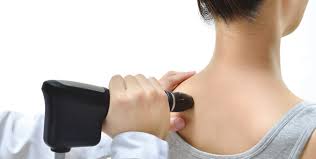
Ultrasonic Therapy
How does therapeutic ultrasound work?
Ultrasound work by utilizing mechanical energy, but despite this is still considered an electrotherapy. The medium for delivering this energy is sound, which is composed of mechanical vibrations of a certain frequency. More specifically ultrasound uses very high frequencies of sound that are inaudible to human beings and actually have a number of uses, including therapeutic ones.
Ultrasound has been used for some time to accelerate and enhance tissue repair, and its effects are broadly described as either thermal or non-thermal. The former is effectively an increase in temperatures caused by passing the energy from the ultrasound waves into the targeted tissues. Heat has therapeutic effects in terms of increasing circulation by causing blood vessels to dilate etc. although that being said, the full mechanisms of this phenomenon are not fully understood.
The non-thermal mechanisms by which ultrasound works are called cavitation and acoustic streaming, and the two often occur simultaneously and synergistically. At recommended therapeutic doses of ultrasound, stable gaseous cavities form (cavitation) that act to basically enhance the second mechanism, acoustic streaming, which seems to be the main therapeutic action of ultrasound. What happens in acoustic streaming is effectively the movement and vibration of cellular fluids near the surface of cell membranes and the aforementioned cavities, causing changes in membrane permeability and hence the movement of essential ions and nutrients across into and out of the cell. The acoustic streaming and cavitation achieve is an up-regulation of cellular activity triggered by ultrasound energy.
What are the benefits of ultrasound therapy?
- Speed’s up the healing process
- Reduces inflammation and pain
- Increases flexibility of scar tissue
- Decreases pain associated with trigger point knots
Uses of ultrasound in physiotherapy and precautions
Physiotherapists will use ultrasound alongside other techniques to encourage tissue repair and regeneration. The use of this technique depends on your physic and their assessment of your condition, but if you are interested in ultrasound, you should discuss it with your physiotherapist.
Most physics will not apply ultrasound to the fetus or surrounding tissues during pregnancy. Ultrasound must also not be exposed to malignant cells (harmful cells that contribute to tumor development) as the excitatory nature of the treatment will cause these cells to proliferate more than usual. Abnormalities in blood flow and your vasculature are always contraindications as well.
Your physic will always use the lowest possible frequency to achieve a positive response to avoid the formation of unstable cavities. The application of ultrasound energy is by means of a wand that must be kept moving throughout the treatment for effective healing. Like other forms of electrotherapy, ultrasounds should not be applied around or over implants like pacemakers.
Ultrasound has been proven to improve and facilitate the treatment of the repair of ligaments, tendons, scar tissue, and joints.
